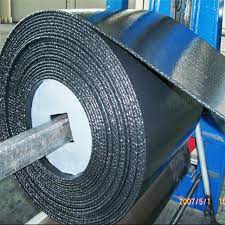Conveyor belting is a seamless tubular fabric skirting or belt that encircles the rotating drive rolls of a conveyor. The material being carried forms an uninterrupted, traveling operative surface between these cylindrical supports, which transfer one onto the other and run from the upstream end to the downstream end.
What is a Conveyor Belt?
A conveyor belt is a system of pulleys and belts that helps move materials from one place to another. Conveyor belts are used in a variety of industries, including food processing, manufacturing, and mining.
Uses for a Conveyor Belt
There are many uses for a conveyor belt in today’s world. They are used extensively in airports for luggage handling and security checkpoints. Conveyor belts are also used in manufacturing and assembly plants to move parts along the production line.
Another common use for conveyor belts is material handling in warehouses and distribution centers. The solid woven conveyor belt can be used to transport boxes, parcels, and pallets from one point to another within the warehouse. In some cases, conveyor belts are used to sort packages by destination.
Conveyor belts are also found in grocery stores and supermarkets. Many times, shoppers will see a conveyor belt running through the checkout lane at their local store. These types of conveyor belts are used to transport items such as groceries, laundry detergent, or other small items from one location to another.
How are belts woven?
Conveyor belts are used in a variety of ways. One way they are used is in the weaving process. Belts are woven on a loom, and the type of weave pattern used depends on the desired results. The most common types of weaves are twill and satin.
Twill weave is composed of parallel yarns that are interlaced at an angle to form a diagonal pattern. This type of weave is stronger than a plain weave and is often used for heavy-duty applications such as conveyor belts.
Satin weave is created by interlacing the yarns so they float over and under one another in a smooth, even pattern. This type of weave results in a glossy surface with a smooth hand, making it ideal for light-duty applications such as garment belts.
skip weft twill: This is a simple twill weave in which each weft thread passes over two, or sometimes three, warp threads before inserting under the next group of warp threads.
Solid woven vs. Chain Link Belts
-Solid woven belts are made of a single layer of fabric that is woven together in a crisscross pattern.
-Chain link belts are made of multiple layers of fabric that are held together by metal or plastic rods.
-Solid woven belts are more durable than chain link belts and can carry heavier loads.
-Chain link belts are more flexible than solid woven belts and can be used in tighter spaces.
-Solid woven belts are better suited for heavy-duty applications, while chain link belts are better suited for light-duty applications. –
PVC Conveyor Belt vs PU Conveyor Belt
-PVC conveyor belts also called polyvinyl chloride conveyor belts, are made of a material that is both strong and flexible.
-PU conveyor belts, also called polyurethane conveyor belts, are made of a material that is both strong and flexible.
-PVC conveyor belts are more durable than PU conveyor belts and can carry heavier loads.
-PU conveyor belts are more flexible than PVC conveyor belts and can be used in tighter spaces.
-PVC conveyor belts are better suited for heavy-duty applications, while PU conveyor belts are better suited for light-duty applications.
Conclusion
The conveyor belt is a very versatile tool that can be used for a wide variety of applications. In this article, we have discussed some of the most common uses for conveyor belts, as well as the pros and cons of using them. Whether you are looking to move heavy objects or simply want an efficient way to transport materials from one place to another, conveyor belts can get the job done.
































